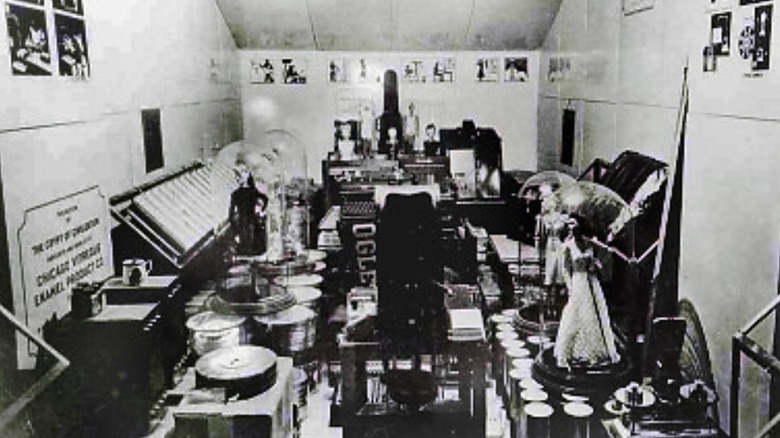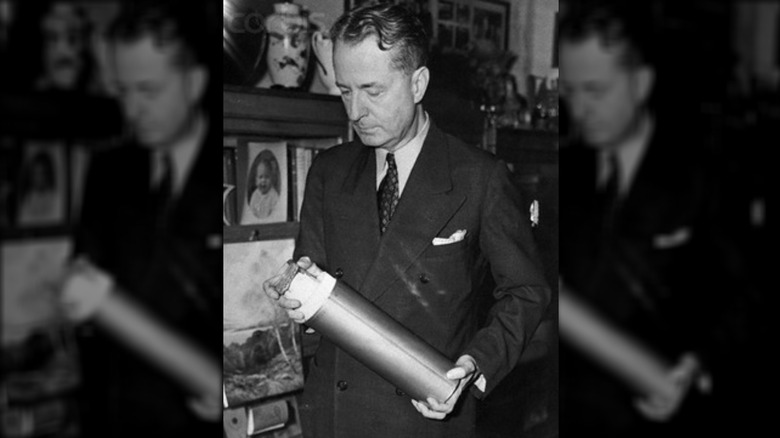Why This Locked Crypt Won't Be Opened For Over 6,000 Years
In the mid-1930s, Dr. Thornwell Jacobs was looking far into the future. During his extensive studies of world history, the President of Oglethorpe University, in Atlanta, Georgia, had found a disconcerting lack of information about the civilizations of the past, and he wanted to avoid such a fate, or worse ones, in the future. According to the Oglethorpe University website, his revolutionary idea to lock up artifacts displaying a snapshot of the extent of human knowledge in the 20th century led to the what we now refer to as time capsules.
Jacobs published an article outlining his idea to create something of permanence to leave for future generations in a 1936 issue of Scientific American magazine. The idea was a hit, prompting the Westinghouse Company buried a sealed container at the 1938-39 New York World's Fair, stating it was not to be opened until 6939 A.D. The company called it a "Time Capsule," instantly coining the term in our lexicon. Jacobs got to work on compiling the information sealed away in the crypt in 1937, and in June 1940, the Crypt of Civilization was sealed, not to be opened for over 6,000 years. That is quite some time. But why did Jacobs choose such a long wait time for his capsule?
The Crypt of Civilization will be opened in 8113 AD
Dr. Thornwell Jacobs didn't just pick 6,000 years or so out of his hat and call it a day. The Oglethorpe website states that he used the oldest date known to history, the year 4241 B.C., to figure in the opening date of his Crypt of Civilization. In 1936, that first recorded year was 6177 years in the past, so he set the opening date that many years in the future to symbolize the extent of our historical knowledge. So if the millennia pass the way Jacobs hoped they will, that is, without having done any damage to his time capsule, the Crypt of Civilization will be opened on May 28, 8113.
The crypt is 20 feet long, 10 feet wide, and buried under two feet of stone beneath Oglethorpe University's Phoebe Hearst Hall. Jacobs had its stainless steel door welded shut for good measure. He strove to condense the previous 6,000 years of history into this limited space, using artifacts like newsreels, recordings, and more than 640,000 micro-film pages of information. Future folks will also find a Donald Duck doll, a set of Lincoln Logs, and tons of other quotidian things from early 20th century life. He did not include anything thieves would want, such as gold, jewels, or other precious metals or stones. Just the facts for those people of the future, whoever they may be.

